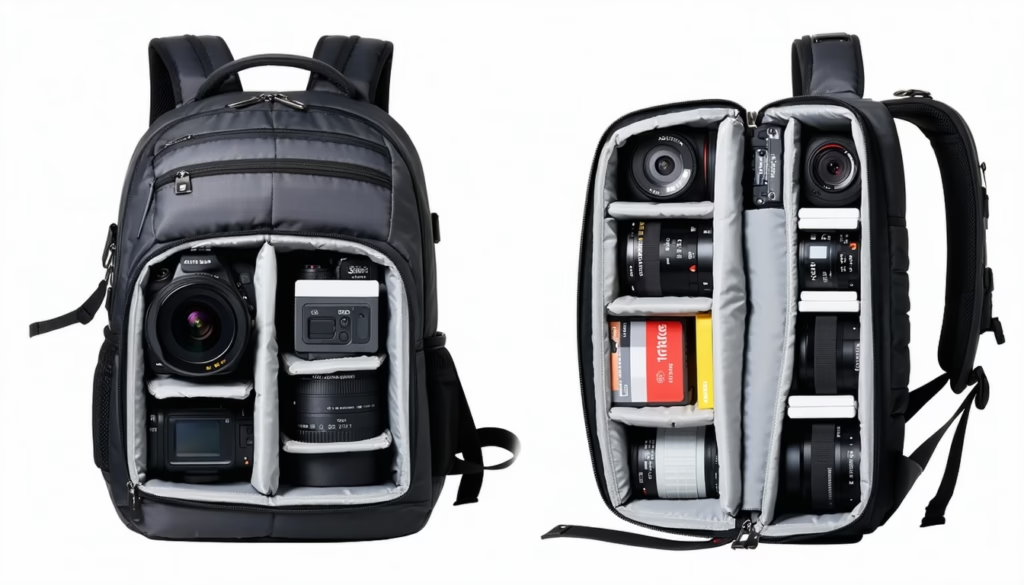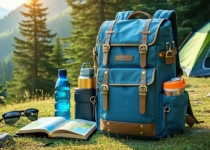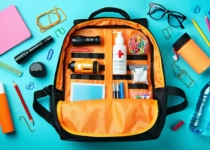The Safest Way To Store Memory Cards In A Backpack

When it comes to the safest way to store memory cards in a backpack, every detail matters. You’ve got your camera, lenses, and other gear neatly packed, but a scratched or soggy SD card can still bring your shoot to a halt. In this guide, we’ll walk through practical tips and tools to keep your memory cards secure, organized, and ready to use.
You’ll learn how to pick the right case, use backpack pockets wisely, guard against moisture and temperature swings, and streamline your on-the-go workflow. Let’s jump in.
Understand Storage Challenges
Before we dive into solutions, let’s look at why memory cards need extra care.
Physical Damage Risks
- Impact from drops or jostling can crack plastic shells
- Scratches on contacts lead to read/write errors
- Magnetic fields (from speakers or power banks) can corrupt data
Moisture and Dust
- Humidity can cause corrosion on contacts
- Dust particles may scratch surfaces during insertion
- Spills inside your bag are more common than you think
Knowing these threats helps you pick storage methods that stop damage before it happens.
Choose Protective Cases
A dedicated case is your first line of defense. Here’s how different options stack up:
| Case Type | Protection Level | Capacity | Pros | Cons |
|---|---|---|---|---|
| Hard-shell case | High (impact) | 4–12 cards | Crush-proof, stackable | Bulkier |
| Anti-static sleeve | Medium | 2 cards | Slim, lightweight | Minimal padding |
| Waterproof pouch | High (water) | 6 cards | Keeps moisture out | Adds volume |
- Hard-shell holders resist drops and crushing forces
- Anti-static sleeves block static electricity, they slip into slim pockets
- Waterproof pouches seal out spills, dust, and humidity
Mix and match cases based on your packing style and card count.
Organize Inside Backpack
A tidy backpack makes card retrieval a breeze and cuts down on accidental damage.
Use Dedicated Pockets
Many camera backpacks include small zippered or mesh pockets just for memory cards. Tuck your cases in there so they stay separate from heavier gear.
DIY Inserts
- Small zip-lock bags or bike tube cartridges can hold extra cases
- Velcro strips and lightweight pouches create custom compartments
- Recycle old film canisters for individual card storage
If you’re curious about organizing more than just cards, check out our tips on best ways to organize lenses inside a camera backpack.
Label and Track Cards
Ever mix up a full card with an empty one? A simple labeling system saves time and prevents data loss.
Color-Coded System
- Apply matching colored stickers to card cases and cards
- Use a different color for each project or day of shooting
Log Your Shoots
- Keep a small notebook or digital log of card IDs, shooting dates, and formats
- Record when you offload images to ensure no card stays in the field too long
A bit of labeling up front keeps your workflow smooth when you’re under pressure.
Protect from Moisture
Even if your backpack isn’t waterproof, your cards can be.
Waterproof Pouches
Choose a durable seal-top pouch or case rated IPX7 or higher. This shields cards from rain, drips, and accidental spills.
Desiccant Packs
- Slip a silica gel packet into each memory card case or pouch
- Replace packs every few months or when they change color
For a fully weather-resistant setup, you might also explore what to look for in a waterproof camera backpack.
Manage Temperature Exposure
Memory cards don’t like extreme heat or cold. Aim to keep them between 32°F and 140°F (0–60°C).
- Avoid leaving your backpack on hot dashboards or in direct sun
- In cold conditions, store cards close to your body before use
- If you cross from cold outdoors into a warm space, let cards acclimate in their case before opening
A little foresight prevents condensation and thermal stress on sensitive electronics.
Streamline Card Access
When inspiration strikes, you don’t want to fumble for the right card.
Front-Pocket Storage
Reserve a quick-access pocket for a single card case or two, so you can swap cards without unpacking your main compartment.
Quick-Swap Routine
- Label your current card as “In Use”
- Carry one “Ready” card in the front pocket
- Stash used cards in the main compartment or offload bag
If you’re curious how pros set up for speed, see our guide to the best camera backpack layouts for fast access.
Frequently Asked Questions
How often should I replace my memory card case?
It depends on wear and tear. Inspect cases every 6 months for cracks or weakened seals, and swap them out if they look worn.
Can moisture damage memory cards if they’re in a backpack?
Yes, high humidity or spills can corrode contacts. Always use waterproof pouches and silica gel packs for extra protection.
Is it okay to store different card formats together?
It’s best to keep microSD and SD cards in separate labeled holders to avoid confusion and accidental formatting.
Should I label memory cards before or after formatting?
Label before formatting. That way you won’t lose your tracking system if a card wipes unexpectedly.
Can I use travel pill containers as memory card holders?
You can, but they offer minimal padding. Combine them with a small padded pouch to guard against impact.
How many memory cards can a typical case hold?
Standard cases range from 4 to 12 cards. Choose capacity based on your shooting style and travel needs.
Conclusion
Storing your memory cards safely in a backpack doesn’t have to be complicated. With the right cases, clear labels, and a few climate-control tricks, you’ll eliminate the most common risks.
Give one or two of these methods a try on your next shoot and notice how much less time you spend hunting for cards or worrying about damage. Your future self—reviewing those flawless shots—will thank you.


